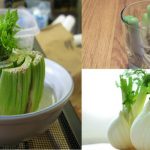Natural medicaments’ composition is based on the good knowledge of herbs properties.
Growing your own medical garden is easier than it might seem. In fact, you might already have one indoors without knowing it: even many customary culinary herbs have a long history as traditional medicines!
1. Common Sage (Salvia officinalis)
Conditions it is recommended for: Sage has cooling and drying body functions because of its phytosterols. This property makes it useful in treating high fevers, diarrhea, and excessive sweating or phlegm, as well as for throat inflammation, asthma, and bronchitis.
How to prepare it: Dry and eat the leaves, or brew them fresh in a tea. For all medicinal infusions, make sure to cover the tea with a lid for at least 10 minutes prior to drinking to avoid the evaporation of active ingredients.
How to grow it: Sage is a perennial that thrives in hot, dry climates, but it will readily grow in some milder weather conditions. Plant it in sandy soil in a sunny spot.
Interesting to note: Some recent studies showed that sage tea is effective for treating diabetes patients.
2. Peppermint (Mentha piperita)
Conditions it is recommended for: Gastrointestinal problems (such as irritable bowel syndrome, dyspepsia, colonic spasms, and gastric emptying disorders) can be relieved with this herb. Peppermint calms intestinal muscles and improves bile flow.
How to prepare it: The best medical use of peppermint comes from extracting the essential oil. Crush the leaves, pack them into a lidded jar, and cover them with vodka. Leave the jar to steep, shaking occasionally. The longer it steeps, the stronger the extract that comes out. Strain out the leaves, leaving only the extract behind.
How to grow it: Peppermint will grow almost anywhere, but it usually thrives in partial shade and in rich, moist soils.
Interesting to note: Like all mints, the primary active ingredient of peppermint is menthol, which is why peppermint tea is an effective decongestant and expectorant. It can also soothe coughing and can help with sore throats.
3. Catnip (Nepeta cataria)
Conditions it is recommended for: Treating common psychological problems such as sleeplessness, anxiety, and addiction. It is also a natural sedative for children, particularly when they are sick, as it helps soothe their sensitive stomach and relax the body.
How to prepare it: Dry leaves and mix them with organic honey for eating, or brew them in a tea.
How to grow it: Catnip is a perennial that prefers rich, well-drained soil or loam and will grow in full sun or partial shade.
Interesting to note: Catnip can also be used as an insect repellant, although Dr. Jenn Dazey, naturopathic physician at Bastyr University’s Department of Botanical Medicine, recommends avoiding it if you are planning to enter forests or jungles populated by large cats.
4. Rosemary (Rosmarinus officinalis)
Conditions it is recommended for: Increasing capillary circulation and antioxidant levels. Its anti-inflammatory properties help reduce the risk of getting a cardiovascular disease and other chronic diseases of the heart and blood.
How to prepare it: The most effective way of using it as a medicinal herb is brewing it in a tea.
How to grow it: Cultivate it in a warm and humid corner of your yard. Rosemary thrives in dry, well-drained soil and fails in extreme cold. In climates with heavy winters, plant it in a container that can be moved indoors.
Interesting to note: The carnosic acid active in rosemary helps protect against cellular and brain damage inflicted by free radicals. This makes it an effective prevention for headaches, memory loss, strokes, and neurological degeneration. Research is being conducted on rosemary’s potential use in the treatment of conditions like Alzheimer’s and Lou Gehrig’s disease.
5. Hyssop ( Hyssopus officinalis)
Conditions it is recommended for: Treating cuts, scrapes, and bruises. With its natural antiseptic properties, hyssop is effective for skin abrasions.
How to prepare it: Dice the leaves by hand or in a food processor to use in a poultice. Alternatively, boil the leaves and soak bandages in the strained mixture.
How to grow it: Hyssop is a perennial, drought-resistant plant. It grows best in warm, dry climates with well-drained soil and full sun exposure.
Interesting to note: Hyssop has many other medical uses that date back to ancient times, though accounts differ on whether the hyssop we use today is the same plant referred to in the Bible’s Psalm 51.
Source:
www.mnn.com



